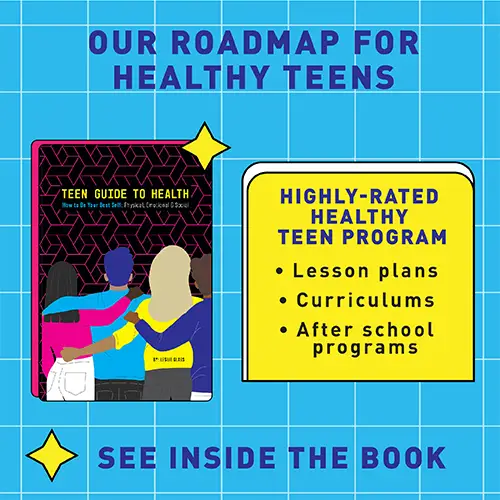Brain Rot Is A Thing For Children And Teens
We’ve known about brain rot for ages. But now the research is in and people are talking about it more. Are they doing anything about it? That’s the question. It’s something we all do that numbs us to what’s happening around us. I spend hours watching feeds on my phone. Like millions of others, I have my favorite subjects and can’t get enough content. Do I have a digital addiction? No, I have a stop button.
Lindsey, my daughter, admits she is tied to her phone and loves animal videos. She may have a technology addiction, too. We’ll have to ask her if she has a stop button, too. So, what happens when you spend too much time on your digital devices? Brain rot occurs, or “brain rot,” if you choose to make it one word. It is a state of mental fogginess and cognitive decline that results from too much screen time. Is brain rot real? Yes, it is real, even though it doesn’t have a medical diagnosis.
What Causes Brain Rot
When we spend hours surfing and scrolling, we absorb meaningless data, negative news, and sometimes lifestyles that make our own seem lackluster and dull. Trying to absorb and cope with massive amounts of content creates mental fatigue. And that can lead to a loss of motivation, focus, productivity, and energy over time, especially in young people. Children can have altered brain function.
We’re All At Risk For Brain Rot
In short, brain rot is caused by excessive technology use. Scrolling through social media platforms spikes the neurochemical dopamine, which produces feelings of satisfaction and pleasure. The more you do it, the more you want to do it. Your brain associates scrolling with a feeling of gratification, even when you’re aware of its negative consequences. In this way, scrolling can become a behavioral addiction.
Examples of Brain Rot Activities That Can Ruin Your Life
Video gaming: While it’s possible to game without getting addicted, some gamers play compulsively and develop gaming disorder. They become so entranced by video games’ alternate worlds, fanciful characters, and complicated plots that they can have difficulty functioning in other areas of life.
Zombie scrolling: This bran rot behavior refers to mindless habitual scrolling with no destination in mind or benefit derived. When zombie scrolling, you vacantly stare at your smart phone as you flit from one feed to another.
Doomscrolling: Doomscrolling involves searching for distressing information and negative news. Doomscrollers feel an overwhelming desire to be up to date on the latest information, even when it’s disturbing.
Social media addiction: Social media addiction is characterized by a persistent urge to check social media and a feeling of restlessness when you try to break the habit. Users can’t stop checking platforms like YouTube, Instagram, and TikTok. Constant notifications, bright colors, and stimulating sounds can literally mesmerize them, causing them to stop thinking clearly.
The Impact of Brain Rot Behavior On Teen Cognition
Research has shown that the Internet can produce acute and sustained alterations in cognition related to attention and memory, which may be reflected in changes in the brain’s gray matter.
Repeated scrolling can have a negative effect on individuals’ mental faculties by disrupting the brain’s capacity to encode and retain information. As well, constant overstimulation can lead to a reduced attention span.
For example, according to a study of 1,051 young adults between 18 and 27 years old, social media addiction has a significant negative association with executive functioning skills such as planning, organization, problem-solving, decision-making, and working memory.
What Brain Rot Behavior Does to Young Adults’ Self-Concept
Self-concept is also affected by brain rot. As the number of social interactions that occur on social networking sites has exploded, the online world has become its own social universe, especially for young adults. How many “friends,” “followers,” or “likes” you have is visible for all to see, making it easy to fall prey to the comparison trap.
Brain Rot Lowers Self Esteem
In addition, the bombardment of posts flaunting people’s professional successes, exotic vacations, blissful relationships, and picture-perfect bodies (often digitally manipulated with filters) can lead to negative self-talk. The brain becomes so cluttered by the constant overstimulation that it struggles to parse out truth from fiction. Self-worth can suffer, leading to heightened levels of stress, anxiety, and depression.
How to Prevent Brain Rot
Preventing brain rot requires that being intentional about your media consumption. Your mental health and emotional well-being are likely to improve when you control your screen engagement. Some of the best strategies include:
Set Limits on Screen Time To Prevent Brain Rot
Start by tracking how much time you spend browsing, scrolling social media, watching videos, and gaming. You may be shocked to discover just how much time you invest in digital pursuits.
Next, set boundaries around the number of hours you sit in front of screens each day. Delete distracting apps from your phone. Turn off notifications for news and social media. And don’t consume content right before bed. As you limit your screen time, notice how you feel.
Curate Your Feeds
Protect your headspace by being mindful of what you consume. Don’t succumb to sensationalistic and negative news. Diversify your media sources so you maintain a more balanced world perspective. Furthermore, unfollow accounts that regularly generate angry or anxious feelings. Populate your feeds with positive content that uplifts and inspires you.
Pursue Non-Digital Interests
There’s a huge world beyond your screen. Reacquaint yourself with it by digging into hobbies and activities you enjoy. Go camping. Listen to music. Play an instrument or learn one. Write in a journal. Volunteer for an organization you believe in. Exercise. Practice yoga or meditation. Structure time each day to do things that make you happy and calm.
More Articles About Digital Addiction
Is Digital Device Addiction A Thing





















